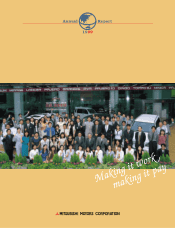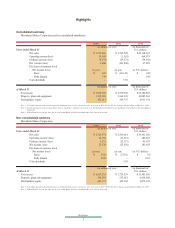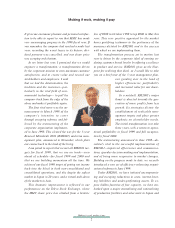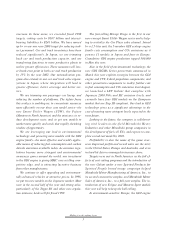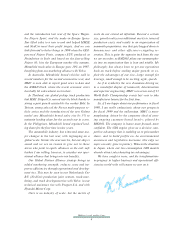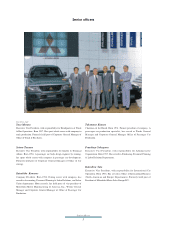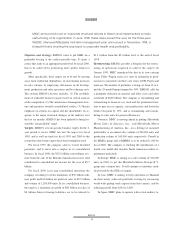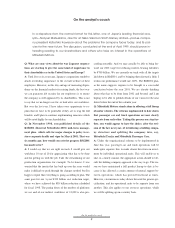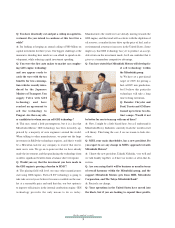Mitsubishi 1999 Annual Report Download - page 4
Download and view the complete annual report
Please find page 4 of the 1999 Mitsubishi annual report below. You can navigate through the pages in the report by either clicking on the pages listed below, or by using the keyword search tool below to find specific information within the annual report.
Making it work, making it pay
Making it work, making it pay
2
It gives me enormous pleasure and personal satisfac-
tion to be able to report to you that MMC has made
very encouraging progress in the 1998 fiscal year. If
you remember, the company had reached a nadir last
year: recording the worst losses in its history, divi-
dend payment was cancelled, and our share price
was scraping rock bottom.
In my letter last year, I promised that we would
engineer a transformation; a transformation driven
by the corporate mission to earn maximum customer
satisfaction, and to create value and reward our
stockholders and employees. I said
that we had the determination, the
tradition and the resources—par-
ticularly in the vital field of envi-
ronmental technology— to pull the
company back from the edge of the
abyss and make it profitable again.
The first vital move was the an-
nouncement in March 1998 of the
company's intention to carry
through sweeping reforms, and fol-
lowed by the restructuring of the
corporate organization implement-
ed in June 1998. This cleared the way for the 3-year
Renewal Mitsubishi 2001 (RM2001) mid-term man-
agement plan, announced in November, which plots
our course back to the land of the living.
I am proud to report that we met all RM2001 tar-
gets for fiscal 1998, that we are on track—even
ahead of schedule—for fiscal 1999 and 2000 and
that we are building momentum all the time. We
achieved our fiscal 1998 target of getting net income
back into the black in both non-consolidated and
consolidated operations, and this despite the softest
market in Japan in 20 years, and a virtual melt-down
of the markets in Asia.
This dramatic improvement is reflected in our
performance on the Tokyo Stock Exchange, where
the MMC share price has climbed from a historic
low of ¥208 in October 1998 to top ¥600 in May this
year. This very positive appraisal by the market
bears gratifying testimony to the pertinence of the
measures dictated by RM2001 and to the success
with which we are implementing them.
The transformation process set in motion last
year is driven by the corporate ideal of earning en-
during customer brand loyalty by offering excellence
in product and service. RM2001 gives us the blue-
print for realizing that ideal, so I would like to take
you on a brief tour of the 3-year management plan,
our guiding star to the land of
higher efficiencies, profitability
and increased value for our share-
holders.
In a nutshell, RM2001's major
thrust is directed towards the gen-
eration of more profits from less
growth. Its strategies dictate the
establishment of realizable man-
agement targets and place greater
emphasis on shareholder needs.
The initial transformation is to take
three years, with a return to opera-
tional profitability in fiscal 1999 and full recupera-
tion by fiscal 2000.
The restructuring announced in June 1998—ab-
solutely vital to the successful implementation of
RM2001—improved efficiencies and communica-
tions, speedier decision-making and implementation,
and of being more responsive to market changes.
Building on the progress made to date, we recently
introduced a new set of efficiency-enhancing organi-
zational reforms in June 1999.
Under RM2001, we have initiated uncompromis-
ing and sweeping reductions in costs, interest-bear-
ing liabilities and under-performing assets. To ex-
pose hidden factories of free capacity, we have em-
barked upon a major streamlining and rationalizing
of production facilities and sales units in Japan and

